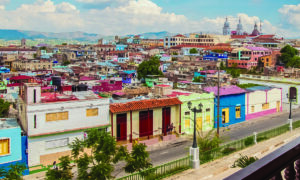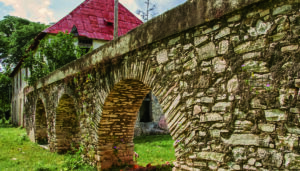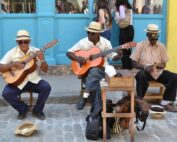Santiago de Cuba and its tourist attractions

Photo: Office of the Conservator of the City of Santiago de Cuba
Omar López Rodríguez, director of the Office of the Conservator of the City of Santiago de Cuba.
Taken of TTC 292, World Travel Market.
The Office of the Conservator of the City of Santiago de Cuba operates in an extensive territory that covers the nine municipalities of that eastern province, even though, due to its recognized exceptional heritage values, it pays special attention to the capital city and its surroundings.
The diversity of the existing heritage configures a range of material and spiritual values; cultural landscapes, sites, environments, buildings and objects are added, where the set of works, ways of life ― generators of a wide miscegenation ― habits, customs, traditions, artistic manifestations, a whole arsenal of wide-ranging sociocultural and important processes are expressed.
Santiago de Cuba shows a legacy of more than 500 years and constitutes a unique example of a Caribbean city that emerged in the 16th century as a consequence of the Hispanic presence in the “New World.” It forged its own physiognomy, rooted in the geography of the insular Caribbean, associated with the sea and mountains, with a rugged topography that allowed it to appear as a labyrinthine and staggered city, full of natural lookout points and public and green spaces. Walking through its streets is an experience that is enriched by the diversity of environments, squares and parks, public buildings, streets, small streets and alleys, Cuban architecture with strong Moorish roots, neoclassical, eclectic, art deco and other modern styles that translate its own vision of shapes, lights and colors.
This city had an important historical-cultural performance, which definitively marked the national future; in its streets, infinite pages of rebellion and love for the nation were written throughout time, becoming transcendent events that live in the memory of its people; this is why it is assumed as “The City of History” and was granted the special condition of being the only Hero City of the Republic of Cuba and the holder of the Antonio Maceo Order.

Photo: Office of the Conservator of the City of Santiago de Cuba
On the other hand, its central location in the insular Caribbean made it a preferred destination for multiple migrations, which conditioned a continuous assimilation of influences that resulted in a popular Cuban culture highlighted in manifestations such as music, dance and others. Cradle of the Cuban bolero, of the ancestral trova and son, defenders of choral music, and the best traditions of African cabildos and carnival, Santiago is a creative musical city recognized by UNESCO. Santiago’s heritage has three components of world heritage, and more than 50 national monuments.
Santiago de Cuba is a possible Mecca of national tourism, every Cuban at some point in their life feels the spiritual need to approach the city of Heredia and Maceo, the Santa Ifigenia Cemetery, in its capacity as Altar of the Homeland, the National Sanctuary of Our Lady of Charity of El Cobre, the most Caribbean city in Cuba, where Cuban music was born and where the most participatory carnival in the country takes place.
Santiago de Cuba is betting on and promoting tourism at an international and national level aimed at developing a wide-range offer based on the conceptualization of an overall vision that integrates the cultural, spiritual and material values of the city. This is how the vision and management of cultural landscapes is related to the concept “the city of six landscapes”: the historical urban, the fortified, the funerary, the underwater, the archaeological coffee plantation, and the associative (mining-slavery-religion); all with enough attractions to motivate an unforgettable stay, of knowledge, learning and enjoyment. This set of landscapes traces tourist routes that ensure penetrating the heritage values of deep Cuba and the intimacy of the insular Caribbean.

MORE NEWS














